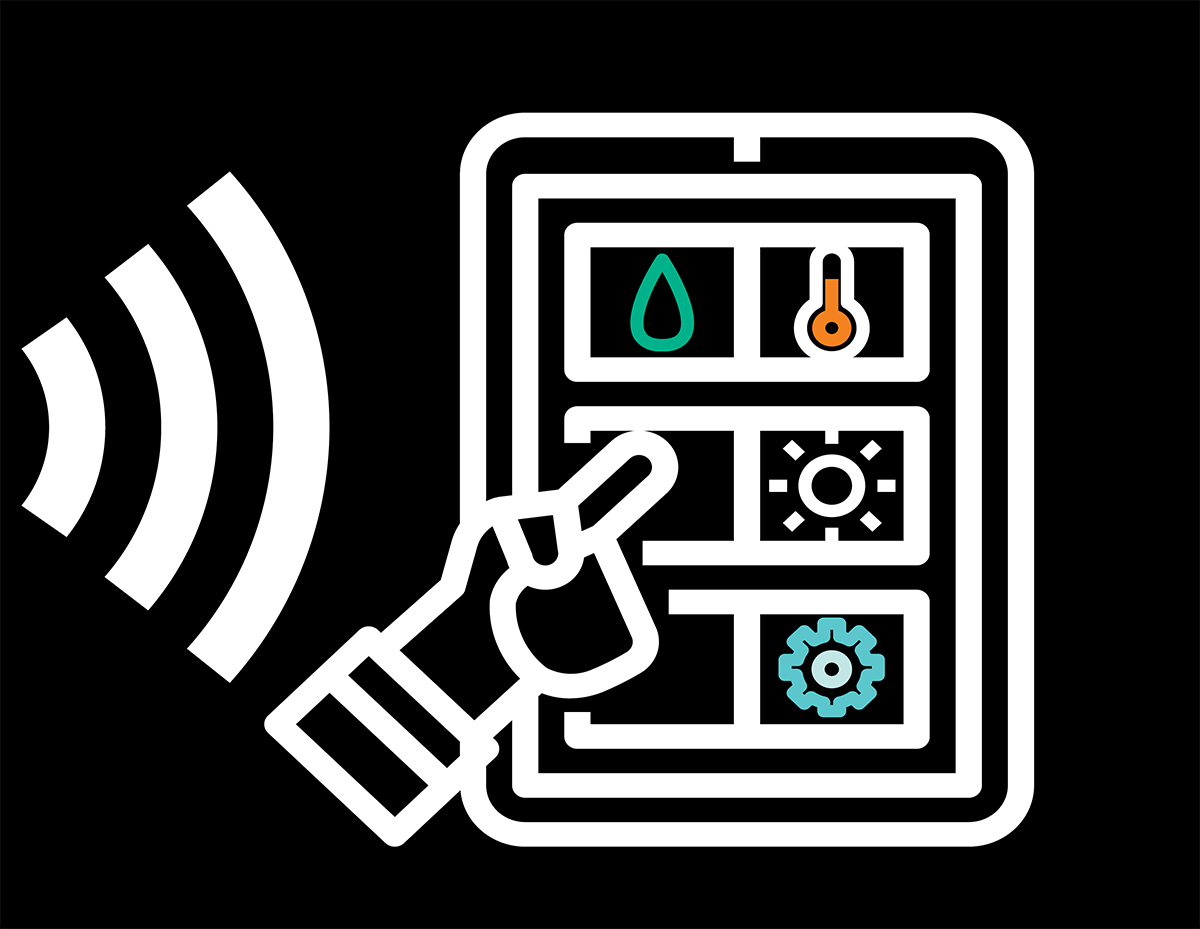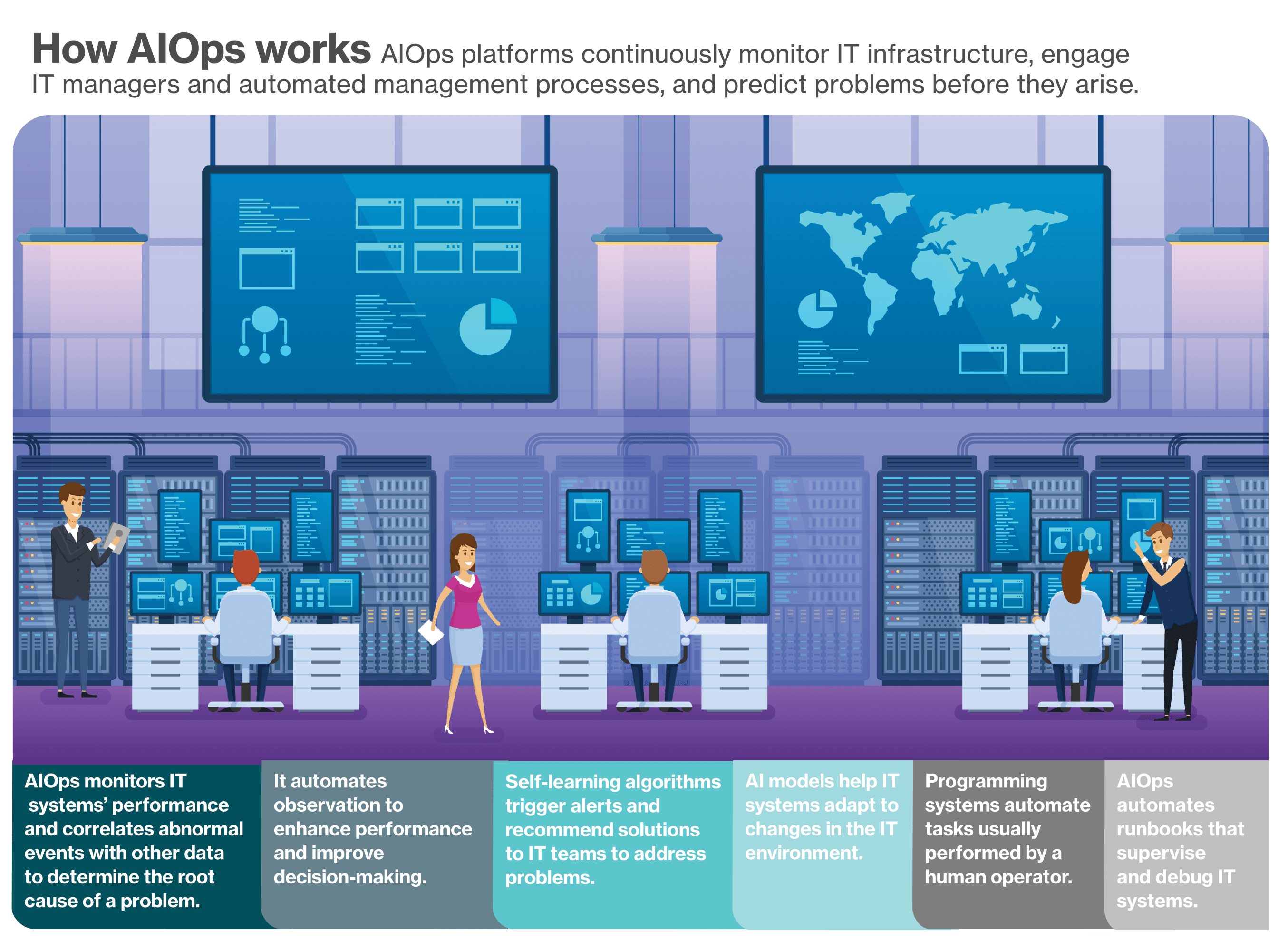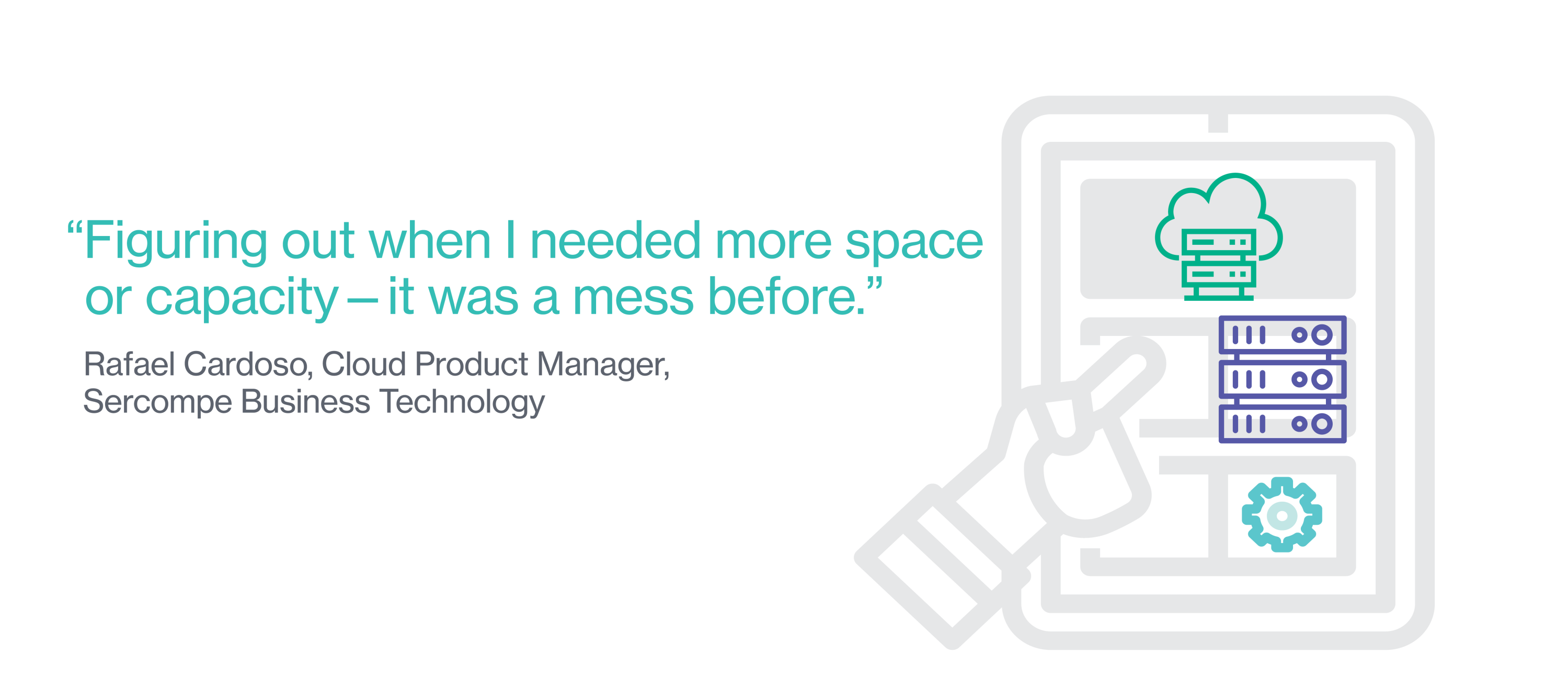Tech
The AI promise: Put IT on autopilot
Published
4 years agoon
By
Terry Power
Sercompe Business Technology provides essential cloud services to roughly 60 corporate clients, supporting a total of about 50,000 users. So, it’s crucial that the Joinville, Brazil, company’s underlying IT infrastructure deliver reliable service with predictably high performance. But with a complex IT environment that includes more than 2,000 virtual machines and 1 petabyte—equivalent to a million gigabytes—of managed data, it was overwhelming for network administrators to sort through all the data and alerts to figure out what was going on when problems cropped up. And it was tough to ensure network and storage capacity were where they should be, or when to do the next upgrade.
To help untangle the complexity and increase its support engineers’ efficiency, Sercompe invested in an artificial intelligence operations (AIOps) platform, which uses AI to get to the root cause of problems and warn IT administrators before small issues become big ones. Now, according to cloud product manager Rafael Cardoso, the AIOps system does much of the work of managing its IT infrastructure—a major boon over the old manual methods.
“Figuring out when I needed more space or capacity—it was a mess before. We needed to get information from so many different points when we were planning. We never got the number correct,” says Cardoso. “Now, I have an entire view of the infrastructure and visualization from the virtual machines to the final disk in the rack.” AIOps brings visibility over the whole environment.
Before deploying the technology, Cardoso was where countless other organizations find themselves: snarled in an intricate web of IT systems, with interdependencies between layers of hardware, virtualization, middleware, and finally, applications. Any disruption or downtime could lead to tedious manual troubleshooting, and ultimately, a negative impact on business: a website that won’t function, for example, and irate customers.
AIOps platforms help IT managers master the task of automating IT operations by using AI to deliver quick intelligence about how the infrastructure is doing—areas that are humming along versus places that are in danger of triggering a downtime event. Credit for coining the term AIOps in 2016 goes to Gartner: it’s a broad category of tools designed to overcome the limitations of traditional monitoring tools. The platforms use self-learning algorithms to automate routine tasks and understand the behavior of the systems they monitor. They pull insights from performance data to identify and monitor irregular behavior on IT infrastructure and applications.
Market research company BCC Research estimates the global market for AIOps to balloon from $3 billion in 2021 to $9.4 billion by 2026, at a compound annual growth rate of 26%.1 Gartner analysts write in their April “Market Guide for AIOps Platforms” that the increasing rate of AIOps adoption is being driven by digital business transformation and the need to move from reactive responses to infrastructure issues to proactive actions.
“With data volumes reaching or exceeding gigabytes per minute across a dozen or more different domains, it is no longer possible for a human to analyze the data manually,” the Gartner analysts write. Applying AI in a systematic way speeds insights and enables proactivity.

According to Mark Esposito, chief learning officer at automation technology company Nexus FrontierTech, the term “AIOps” evolved from “DevOps”—the software engineering culture and practice that aims to integrate software development and operations. “The idea is to advocate automation and monitoring at all stages, from software construction to infrastructure management,” says Esposito. Recent innovation in the field includes using predictive analytics to anticipate and resolve problems before they can affect IT operations.
AIOps helps infrastructure fade into the background
Network and IT administrators harried by exploding data volumes and burgeoning complexity could use the help, says Saurabh Kulkarni, head of engineering and product management at Hewlett Packard Enterprise. Kulkarni works on HPE InfoSight, a cloud-based AIOps platform for proactively managing data center systems.
“IT administrators spend tons and tons of time planning their work, planning the deployments, adding new nodes, compute, storage, and all. And when something goes wrong in the infrastructure, it’s extremely difficult to debug those issues manually,” says Kulkarni. “AIOps uses machine-learning algorithms to look at the patterns, examine the repeated behaviors, and learn from them to provide a quick recommendation to the user.” Beyond storage nodes, every piece of IT infrastructure will send a separate alert so issues can be resolved speedily.
The InfoSight system collects data from all the devices in a customer’s environment and then correlates it with data from HPE customers with similar IT environments. The system can pinpoint a potential problem so it’s quickly resolved—if the problem crops up again, the fix can be automatically applied. Alternatively, the system sends an alert so IT teams can clear up the issue quickly, Kulkarni adds. Take the case of a storage controller that failed because it doesn’t have power. Rather than assuming the problem relates exclusively to storage, the AIOps platform surveys the entire infrastructure stack, all the way to the application layer, to identify the root cause.
“The system monitors the performance and can see anomalies. We have algorithms that constantly run in the background to detect any abnormal behaviors and alert the customers before the problem happens,” says Kulkarni. The philosophy behind InfoSight is to “make the infrastructure disappear” by bringing IT systems and all the telemetry data into one pane of glass. Looking at one giant set of data, administrators can quickly figure out what’s going wrong with the infrastructure.

Kulkarni recalls the difficulty of managing a large IT environment from past jobs. “I had to manage a large data set, and I had to call so many different vendors and be on hold for multiple hours to try to figure out problems,” he says. “Sometimes it took us days to understand what was really going on.”
By automating data collection and tapping a wealth of data to understand root causes, AIOps enables companies to reallocate core personnel, including IT administrators, storage administrators, and network admins, consolidating roles as the infrastructure is simplified, and spending more time ensuring application performance. “Previously, companies used to have multiple roles and different departments handling different things. So even to deploy a new storage area, five different admins each had to do their individual piece,” says Kulkarni. But with AIOps, AI handles much of the work automatically so IT and support staff can devote their time to more strategic initiatives, increasing efficiency and, in the case of a business that provides technical support to its customers, improving profit margins. For example, Sercompe’s Cardoso has been able to reduce the average time his support engineers spend on customer calls, reflecting better customer experience while increasing efficiency.
Download the full report.
This content was produced by Insights, the custom content arm of MIT Technology Review. It was not written by MIT Technology Review’s editorial staff.
You may like
-


The race to lead China’s autonomous driving market
-


The Download: the promise of stem cell treatments, and China’s screen time crackdown
-


2 Cancer Drug Trials Put On Hold After 6 Participants Died During Testing
-


Personalized Bi-Sensory Stimulation Shows Promise In Treating Tinnitus, Study Shows
-


AI in cybersecurity: Yesterday’s promise, today’s reality
-


New Flu Vaccine Could Put An End To Yearly Flu Shots

My senior spring in high school, I decided to defer my MIT enrollment by a year. I had always planned to take a gap year, but after receiving the silver tube in the mail and seeing all my college-bound friends plan out their classes and dorm decor, I got cold feet. Every time I mentioned my plans, I was met with questions like “But what about school?” and “MIT is cool with this?”
Yeah. MIT totally is. Postponing your MIT start date is as simple as clicking a checkbox.
COURTESY PHOTO
Now, having finished my first year of classes, I’m really grateful that I stuck with my decision to delay MIT, as I realized that having a full year of unstructured time is a gift. I could let my creative juices run. Pick up hobbies for fun. Do cool things like work at an AI startup and teach myself how to create latte art. My favorite part of the year, however, was backpacking across Europe. I traveled through Austria, Slovakia, Russia, Spain, France, the UK, Greece, Italy, Germany, Poland, Romania, and Hungary.
Moreover, despite my fear that I’d be losing a valuable year, traveling turned out to be the most productive thing I could have done with my time. I got to explore different cultures, meet new people from all over the world, and gain unique perspectives that I couldn’t have gotten otherwise. My travels throughout Europe allowed me to leave my comfort zone and expand my understanding of the greater human experience.
“In Iceland there’s less focus on hustle culture, and this relaxed approach to work-life balance ends up fostering creativity. This was a wild revelation to a bunch of MIT students.”
When I became a full-time student last fall, I realized that StartLabs, the premier undergraduate entrepreneurship club on campus, gives MIT undergrads a similar opportunity to expand their horizons and experience new things. I immediately signed up. At StartLabs, we host fireside chats and ideathons throughout the year. But our flagship event is our annual TechTrek over spring break. In previous years, StartLabs has gone on TechTrek trips to Germany, Switzerland, and Israel. On these fully funded trips, StartLabs members have visited and collaborated with industry leaders, incubators, startups, and academic institutions. They take these treks both to connect with the global startup sphere and to build closer relationships within the club itself.
Most important, however, the process of organizing the TechTrek is itself an expedited introduction to entrepreneurship. The trip is entirely planned by StartLabs members; we figure out travel logistics, find sponsors, and then discover ways to optimize our funding.

COURTESY PHOTO
In organizing this year’s trip to Iceland, we had to learn how to delegate roles to all the planners and how to maintain morale when making this trip a reality seemed to be an impossible task. We woke up extra early to take 6 a.m. calls with Icelandic founders and sponsors. We came up with options for different levels of sponsorship, used pattern recognition to deduce the email addresses of hundreds of potential contacts at organizations we wanted to visit, and all got scrappy with utilizing our LinkedIn connections.
And as any good entrepreneur must, we had to learn how to be lean and maximize our resources. To stretch our food budget, we planned all our incubator and company visits around lunchtime in hopes of getting fed, played human Tetris as we fit 16 people into a six-person Airbnb, and emailed grocery stores to get their nearly expired foods for a discount. We even made a deal with the local bus company to give us free tickets in exchange for a story post on our Instagram account.
Tech
The Download: spying keyboard software, and why boring AI is best
Published
2 years agoon
22 August 2023By
Terry Power
This is today’s edition of The Download, our weekday newsletter that provides a daily dose of what’s going on in the world of technology.
How ubiquitous keyboard software puts hundreds of millions of Chinese users at risk
For millions of Chinese people, the first software they download onto devices is always the same: a keyboard app. Yet few of them are aware that it may make everything they type vulnerable to spying eyes.
QWERTY keyboards are inefficient as many Chinese characters share the same latinized spelling. As a result, many switch to smart, localized keyboard apps to save time and frustration. Today, over 800 million Chinese people use third-party keyboard apps on their PCs, laptops, and mobile phones.
But a recent report by the Citizen Lab, a University of Toronto–affiliated research group, revealed that Sogou, one of the most popular Chinese keyboard apps, had a massive security loophole. Read the full story.
—Zeyi Yang
Why we should all be rooting for boring AI
Earlier this month, the US Department of Defense announced it is setting up a Generative AI Task Force, aimed at “analyzing and integrating” AI tools such as large language models across the department. It hopes they could improve intelligence and operational planning.
But those might not be the right use cases, writes our senior AI reporter Melissa Heikkila. Generative AI tools, such as language models, are glitchy and unpredictable, and they make things up. They also have massive security vulnerabilities, privacy problems, and deeply ingrained biases.
Applying these technologies in high-stakes settings could lead to deadly accidents where it’s unclear who or what should be held responsible, or even why the problem occurred. The DoD’s best bet is to apply generative AI to more mundane things like Excel, email, or word processing. Read the full story.
This story is from The Algorithm, Melissa’s weekly newsletter giving you the inside track on all things AI. Sign up to receive it in your inbox every Monday.
The ice cores that will let us look 1.5 million years into the past
To better understand the role atmospheric carbon dioxide plays in Earth’s climate cycles, scientists have long turned to ice cores drilled in Antarctica, where snow layers accumulate and compact over hundreds of thousands of years, trapping samples of ancient air in a lattice of bubbles that serve as tiny time capsules.
By analyzing those cores, scientists can connect greenhouse-gas concentrations with temperatures going back 800,000 years. Now, a new European-led initiative hopes to eventually retrieve the oldest core yet, dating back 1.5 million years. But that impressive feat is still only the first step. Once they’ve done that, they’ll have to figure out how they’re going to extract the air from the ice. Read the full story.
—Christian Elliott
This story is from the latest edition of our print magazine, set to go live tomorrow. Subscribe today for as low as $8/month to ensure you receive full access to the new Ethics issue and in-depth stories on experimental drugs, AI assisted warfare, microfinance, and more.
The must-reads
I’ve combed the internet to find you today’s most fun/important/scary/fascinating stories about technology.
1 How AI got dragged into the culture wars
Fears about ‘woke’ AI fundamentally misunderstand how it works. Yet they’re gaining traction. (The Guardian)
+ Why it’s impossible to build an unbiased AI language model. (MIT Technology Review)
2 Researchers are racing to understand a new coronavirus variant
It’s unlikely to be cause for concern, but it shows this virus still has plenty of tricks up its sleeve. (Nature)
+ Covid hasn’t entirely gone away—here’s where we stand. (MIT Technology Review)
+ Why we can’t afford to stop monitoring it. (Ars Technica)
3 How Hilary became such a monster storm
Much of it is down to unusually hot sea surface temperatures. (Wired $)
+ The era of simultaneous climate disasters is here to stay. (Axios)
+ People are donning cooling vests so they can work through the heat. (Wired $)
4 Brain privacy is set to become important
Scientists are getting better at decoding our brain data. It’s surely only a matter of time before others want a peek. (The Atlantic $)
+ How your brain data could be used against you. (MIT Technology Review)
5 How Nvidia built such a big competitive advantage in AI chips
Today it accounts for 70% of all AI chip sales—and an even greater share for training generative models. (NYT $)
+ The chips it’s selling to China are less effective due to US export controls. (Ars Technica)
+ These simple design rules could turn the chip industry on its head. (MIT Technology Review)
6 Inside the complex world of dissociative identity disorder on TikTok
Reducing stigma is great, but doctors fear people are self-diagnosing or even imitating the disorder. (The Verge)
7 What TikTok might have to give up to keep operating in the US
This shows just how hollow the authorities’ purported data-collection concerns really are. (Forbes)
8 Soldiers in Ukraine are playing World of Tanks on their phones
It’s eerily similar to the war they are themselves fighting, but they say it helps them to dissociate from the horror. (NYT $)
9 Conspiracy theorists are sharing mad ideas on what causes wildfires
But it’s all just a convoluted way to try to avoid having to tackle climate change. (Slate $)
10 Christie’s accidentally leaked the location of tons of valuable art 

Seemingly thanks to the metadata that often automatically attaches to smartphone photos. (WP $)
Quote of the day
“Is it going to take people dying for something to move forward?”
—An anonymous air traffic controller warns that staffing shortages in their industry, plus other factors, are starting to threaten passenger safety, the New York Times reports.
The big story
Inside effective altruism, where the far future counts a lot more than the present

October 2022
Since its birth in the late 2000s, effective altruism has aimed to answer the question “How can those with means have the most impact on the world in a quantifiable way?”—and supplied methods for calculating the answer.
It’s no surprise that effective altruisms’ ideas have long faced criticism for reflecting white Western saviorism, alongside an avoidance of structural problems in favor of abstract math. And as believers pour even greater amounts of money into the movement’s increasingly sci-fi ideals, such charges are only intensifying. Read the full story.
—Rebecca Ackermann
We can still have nice things
A place for comfort, fun and distraction in these weird times. (Got any ideas? Drop me a line or tweet ’em at me.)
+ Watch Andrew Scott’s electrifying reading of the 1965 commencement address ‘Choose One of Five’ by Edith Sampson.
+ Here’s how Metallica makes sure its live performances ROCK. ($)
+ Cannot deal with this utterly ludicrous wooden vehicle.
+ Learn about a weird and wonderful new instrument called a harpejji.
Tech
Why we should all be rooting for boring AI
Published
2 years agoon
22 August 2023By
Terry Power
This story originally appeared in The Algorithm, our weekly newsletter on AI. To get stories like this in your inbox first, sign up here.
I’m back from a wholesome week off picking blueberries in a forest. So this story we published last week about the messy ethics of AI in warfare is just the antidote, bringing my blood pressure right back up again.
Arthur Holland Michel does a great job looking at the complicated and nuanced ethical questions around warfare and the military’s increasing use of artificial-intelligence tools. There are myriad ways AI could fail catastrophically or be abused in conflict situations, and there don’t seem to be any real rules constraining it yet. Holland Michel’s story illustrates how little there is to hold people accountable when things go wrong.
Last year I wrote about how the war in Ukraine kick-started a new boom in business for defense AI startups. The latest hype cycle has only added to that, as companies—and now the military too—race to embed generative AI in products and services.
Earlier this month, the US Department of Defense announced it is setting up a Generative AI Task Force, aimed at “analyzing and integrating” AI tools such as large language models across the department.
The department sees tons of potential to “improve intelligence, operational planning, and administrative and business processes.”
But Holland Michel’s story highlights why the first two use cases might be a bad idea. Generative AI tools, such as language models, are glitchy and unpredictable, and they make things up. They also have massive security vulnerabilities, privacy problems, and deeply ingrained biases.
Applying these technologies in high-stakes settings could lead to deadly accidents where it’s unclear who or what should be held responsible, or even why the problem occurred. Everyone agrees that humans should make the final call, but that is made harder by technology that acts unpredictably, especially in fast-moving conflict situations.
Some worry that the people lowest on the hierarchy will pay the highest price when things go wrong: “In the event of an accident—regardless of whether the human was wrong, the computer was wrong, or they were wrong together—the person who made the ‘decision’ will absorb the blame and protect everyone else along the chain of command from the full impact of accountability,” Holland Michel writes.
The only ones who seem likely to face no consequences when AI fails in war are the companies supplying the technology.
It helps companies when the rules the US has set to govern AI in warfare are mere recommendations, not laws. That makes it really hard to hold anyone accountable. Even the AI Act, the EU’s sweeping upcoming regulation for high-risk AI systems, exempts military uses, which arguably are the highest-risk applications of them all.
While everyone is looking for exciting new uses for generative AI, I personally can’t wait for it to become boring.
Amid early signs that people are starting to lose interest in the technology, companies might find that these sorts of tools are better suited for mundane, low-risk applications than solving humanity’s biggest problems.
Applying AI in, for example, productivity software such as Excel, email, or word processing might not be the sexiest idea, but compared to warfare it’s a relatively low-stakes application, and simple enough to have the potential to actually work as advertised. It could help us do the tedious bits of our jobs faster and better.
Boring AI is unlikely to break as easily and, most important, won’t kill anyone. Hopefully, soon we’ll forget we’re interacting with AI at all. (It wasn’t that long ago when machine translation was an exciting new thing in AI. Now most people don’t even think about its role in powering Google Translate.)
That’s why I’m more confident that organizations like the DoD will find success applying generative AI in administrative and business processes.
Boring AI is not morally complex. It’s not magic. But it works.
Deeper Learning
AI isn’t great at decoding human emotions. So why are regulators targeting the tech?
Amid all the chatter about ChatGPT, artificial general intelligence, and the prospect of robots taking people’s jobs, regulators in the EU and the US have been ramping up warnings against AI and emotion recognition. Emotion recognition is the attempt to identify a person’s feelings or state of mind using AI analysis of video, facial images, or audio recordings.
But why is this a top concern? Western regulators are particularly concerned about China’s use of the technology, and its potential to enable social control. And there’s also evidence that it simply does not work properly. Tate Ryan-Mosley dissected the thorny questions around the technology in last week’s edition of The Technocrat, our weekly newsletter on tech policy.
Bits and Bytes
Meta is preparing to launch free code-generating software
A version of its new LLaMA 2 language model that is able to generate programming code will pose a stiff challenge to similar proprietary code-generating programs from rivals such as OpenAI, Microsoft, and Google. The open-source program is called Code Llama, and its launch is imminent, according to The Information. (The Information)
OpenAI is testing GPT-4 for content moderation
Using the language model to moderate online content could really help alleviate the mental toll content moderation takes on humans. OpenAI says it’s seen some promising first results, although the tech does not outperform highly trained humans. A lot of big, open questions remain, such as whether the tool can be attuned to different cultures and pick up context and nuance. (OpenAI)
Google is working on an AI assistant that offers life advice
The generative AI tools could function as a life coach, offering up ideas, planning instructions, and tutoring tips. (The New York Times)
Two tech luminaries have quit their jobs to build AI systems inspired by bees
Sakana, a new AI research lab, draws inspiration from the animal kingdom. Founded by two prominent industry researchers and former Googlers, the company plans to make multiple smaller AI models that work together, the idea being that a “swarm” of programs could be as powerful as a single large AI model. (Bloomberg)
